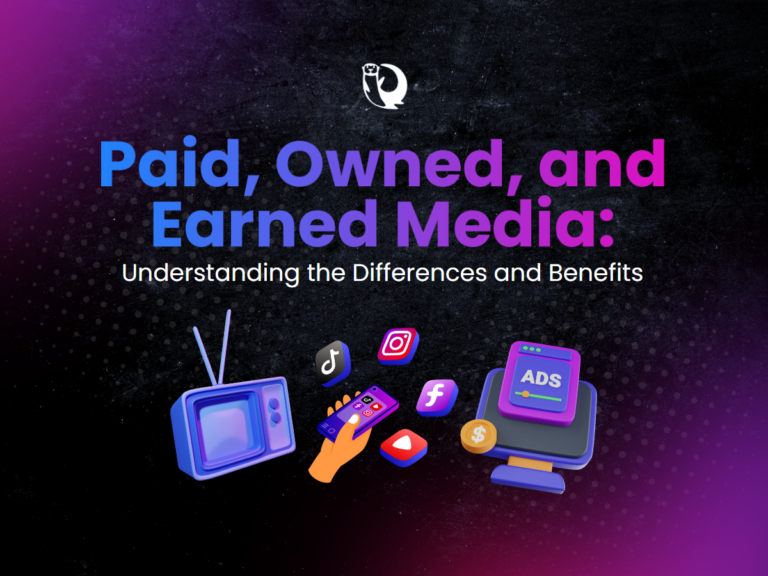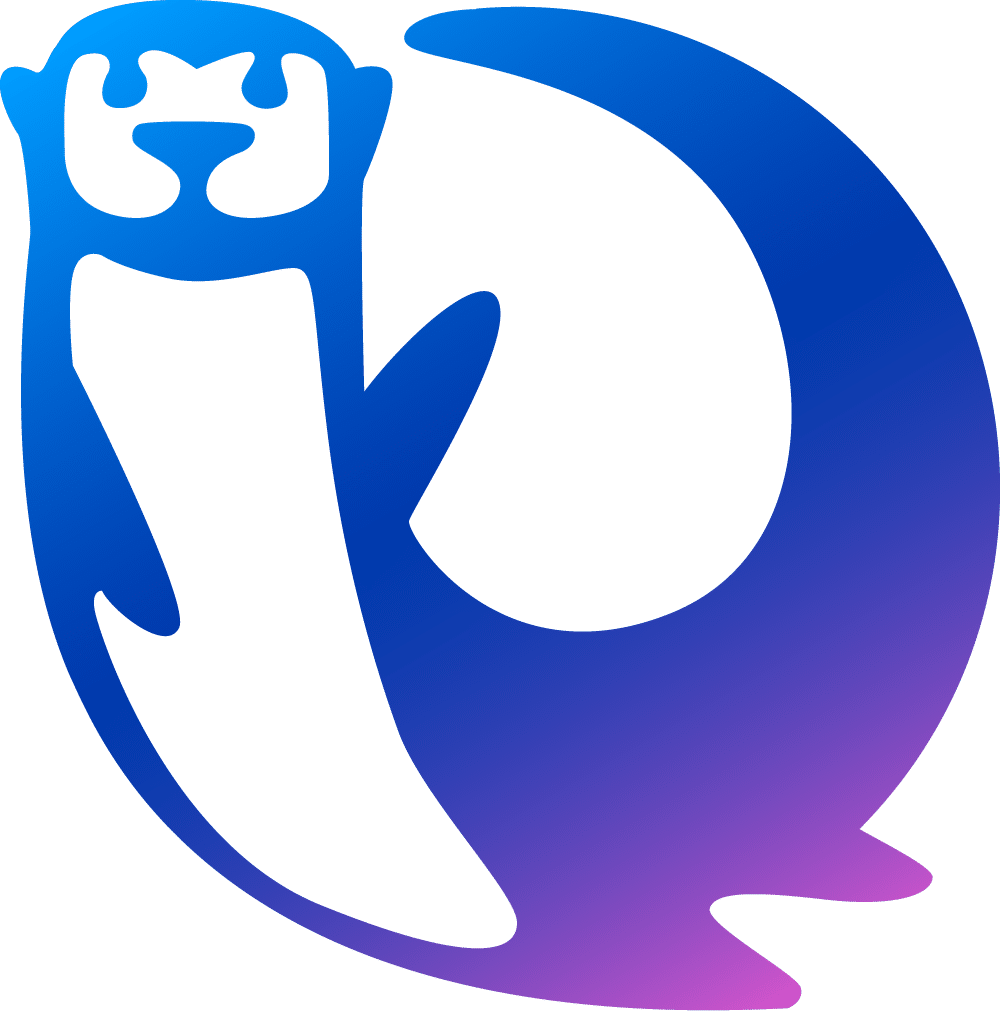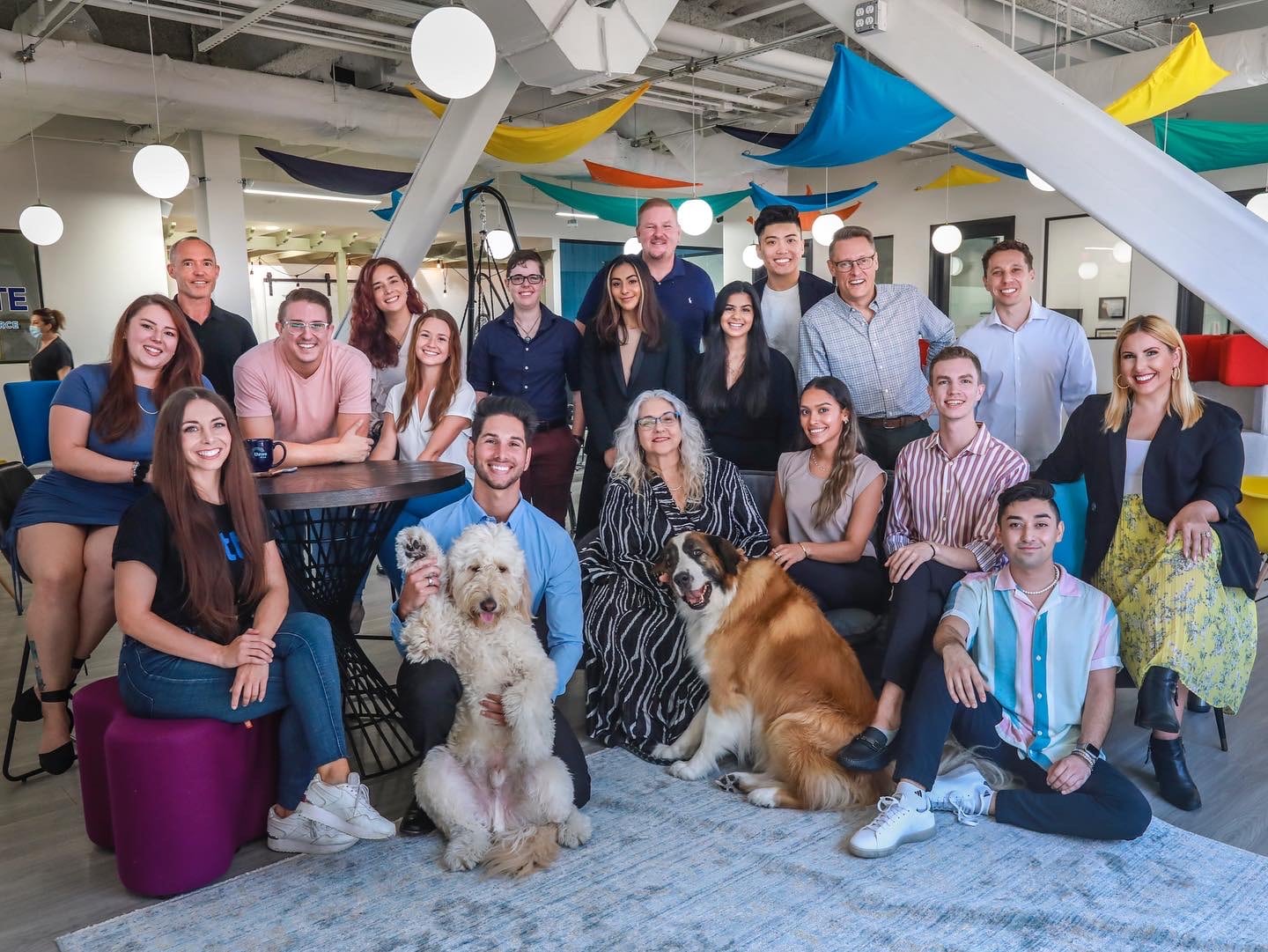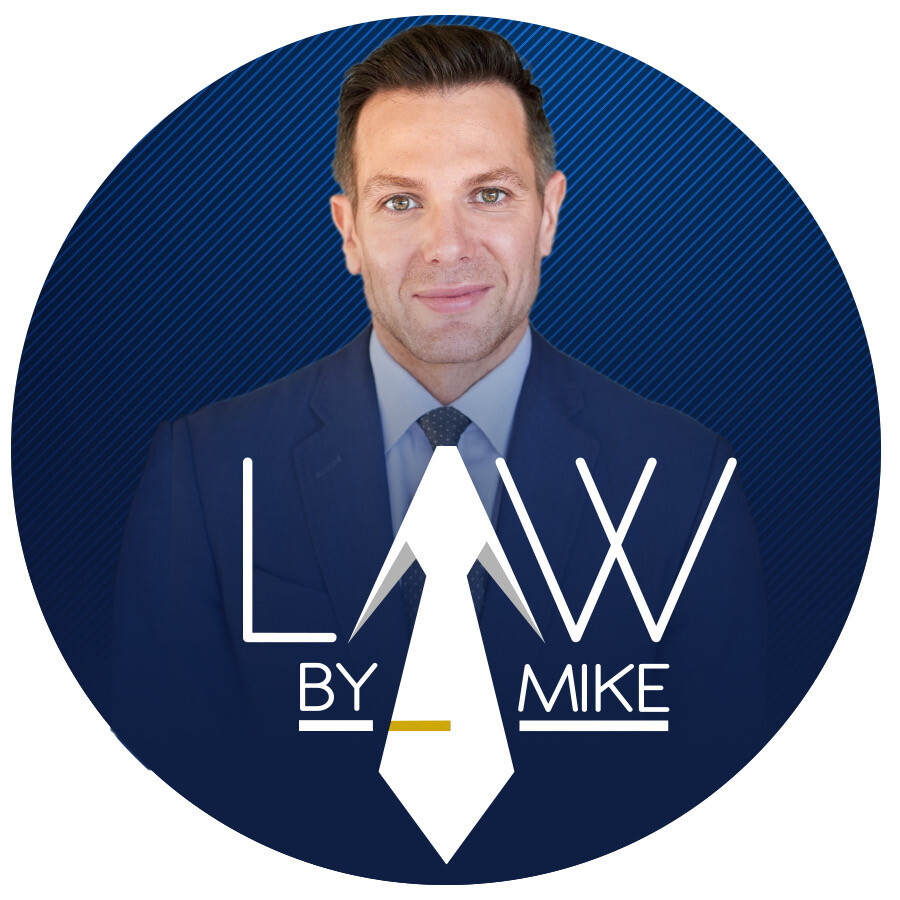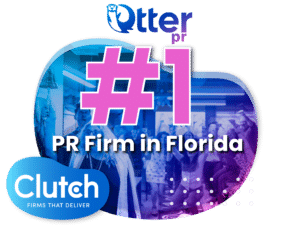In today’s fast-paced digital world, it’s more important than ever for businesses and brands to understand the various forms of media exposure they can use to reach their target audience. Paid media, earned media, and owned media are three of the most prominent forms of media exposure, and they each have their own unique benefits and drawbacks.
What is Paid Media
Paid media refers to the various forms of advertising that companies and brands use to promote their products or services. This includes paid advertising channels such as television and online display ads, paid search ads, influencer marketing, sponsored content, and more. Paid media is a way for a brand to reach its target audience by paying for guaranteed placement and exposure on various media platforms. The goal of paid media is to drive engagement, generate leads, and increase sales or conversions.
Advantages of Paid Media:
-
Reach: Paid media allows you to reach a large audience quickly and effectively. With targeted advertising, you can reach your specific target audience and generate leads, conversions, and sales.
-
Speed: Paid media campaigns can be launched quickly, allowing you to quickly respond to market changes and emerging opportunities.
-
Measurable results: Paid media provides measurable results, allowing you to track your ROI and make data-driven decisions about your marketing strategy.
-
Flexibility: Paid media offers flexibility, allowing you to adjust your campaigns in real-time to optimize your results.
Disadvantages of Paid Media:
-
Cost: Paid media can be expensive, especially for competitive keywords and industries.
-
Ad fatigue: Over-exposure to advertising can lead to ad fatigue, causing consumers to tune out your message and reducing the effectiveness of your campaigns.
-
Lack of control: Paid media puts your message in the hands of the platform or publisher, reducing your control over the messaging and placement of your ads.
-
Inaccurate targeting: Paid media relies on the accuracy of targeting data, which can sometimes be unreliable, resulting in wasted ad spend and ineffective campaigns.

Examples of Paid Media:
-
Online Advertising: This includes search engine advertising (Google AdWords), display advertising (banner ads), and social media advertising (Facebook, Instagram, Twitter, etc.).
-
Television Advertising: This includes commercials on broadcast and cable television.
-
Radio Advertising: This includes commercials on local or national radio stations.
-
Outdoor Advertising: This includes billboards, bus shelters, and other forms of outdoor advertising.
-
Print Advertising: This includes ads in newspapers, magazines, and other print publications.
-
Native Advertising: This is a form of advertising that matches the form and function of the platform it appears on, but includes a sponsored message.
-
Video Advertising: This includes commercials, product demos, and other forms of video content.
-
Affiliate Marketing: This is a form of advertising where affiliates are paid a commission for promoting a brand’s products or services.
What is Earned Media
Earned media refers to the publicity that a brand or company gains through word-of-mouth promotion and other forms of earned coverage, such as customer reviews, news articles, and social media posts. It is a form of non-paid media exposure that is generated organically, rather than through paid advertising or sponsored content. Earned media is a powerful tool for building brand reputation and credibility because it is often seen as more trustworthy and credible by the target audience than paid media.
Advantages of Earned Media:
-
Trust: Earned media often carries a higher level of trust and credibility than paid media, as it’s seen as an endorsement from a trusted source.
-
Reach: Earned media can reach a large audience through word-of-mouth and social sharing.
-
Cost-effective: Earned media is generally free or low-cost, making it a cost-effective way to reach your target audience.
-
Organic growth: Earned media can drive organic growth and build brand awareness, as it’s generated by your customers and fans rather than paid advertising.
Disadvantages of Earned Media:
-
Lack of control: With earned media, you have limited control over the message and placement, as it’s generated by customers, fans, and other external sources.
-
Difficulty in measuring: Earned media can be difficult to track and measure, making it challenging to measure the impact and ROI of your earned media efforts.
-
Unpredictable: Earned media can be unpredictable and difficult to generate, as it depends on the actions and opinions of others.
-
Negative reviews: Earned media can also include negative reviews and criticism, which can impact your brand and reputation.
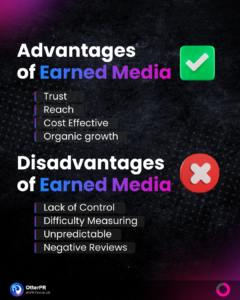
Examples of Earned Media:
-
Word-of-mouth referrals: When customers recommend your brand or product to others, it’s a form of earned media.
-
User-generated content: Content created by your customers and fans, such as reviews, testimonials, and social media posts, can be considered earned media.
-
Influencer endorsements: When influencers or celebrities promote your brand or product on social media, it’s considered earned media.
-
News coverage: Positive news coverage, such as articles, features, and interviews, can generate earned media for your brand.
-
Community events: Sponsoring or participating in community events and causes can generate earned media through social media posts and news coverage.
-
Viral content: When your content is shared and spread organically through social media, it can generate earned media for your brand.
-
User reviews: User reviews and ratings on sites like Yelp and TripAdvisor can generate earned media for your brand.
What is Owned Media
Owned media refers to the various platforms and channels that a brand or company controls, such as its website, blog, email list, social media accounts, and other digital properties. Owned media allows brands to control the message and create a consistent brand experience for their target audience. The goal of owned media is to build a strong online presence, engage with the target audience, and drive conversions.
Advantages of Owned Media:
-
Control: Owned media gives you complete control over the message, tone, and content of your marketing efforts, allowing you to effectively communicate your brand and values to your target audience.
-
Cost-effective: Owned media is often a low-cost or no-cost way to reach your target audience, making it a cost-effective alternative to paid media.
-
Building brand identity: Owned media allows you to build your brand identity and differentiate yourself from your competitors, making it a key component of your brand strategy.
-
Long-term benefits: Owned media has the potential to generate long-term benefits, as it can drive traffic, build brand awareness, and generate leads over time.
Disadvantages of Owned Media:
-
Limited reach: Owned media can have limited reach, especially if you have a small audience or limited distribution channels.
-
Requires resources: Owned media requires resources, including time, manpower, and technical expertise, to create and distribute effectively.
-
Difficulty in measuring: Owned media can be challenging to track and measure, making it difficult to measure the impact and ROI of your owned media efforts.
-
Requires ongoing effort: Owned media requires ongoing effort and maintenance, as you must continuously create and distribute new content to keep your audience engaged.
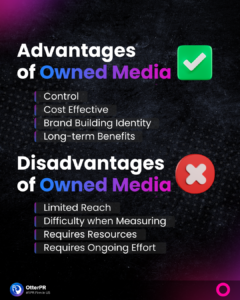
Examples of Owned Media:
-
Company Website: This is the central hub for your brand’s online presence and serves as a platform for promoting your products, services, and company culture.
-
Blog: A blog is a platform for creating and sharing valuable content with your target audience, building brand awareness, and driving traffic to your website.
-
Social Media: Social media platforms, such as Facebook, Instagram, and Twitter, provide a way for your brand to connect with your target audience, share content, and build relationships.
-
Email Marketing: Email marketing is a way to reach your target audience directly, promote your products, and build relationships with your customers.
-
Branded Content: Branded content, such as videos, podcasts, and e-books, provides a way for your brand to educate, entertain, and engage your target audience.
-
Physical locations: Physical locations, such as retail stores, showrooms, and offices, serve as a platform for promoting your brand, building relationships with customers, and generating leads.
-
Company Culture: Your company culture, values, and practices can be considered a form of owned media, as they help define your brand and set you apart from your competitors.
